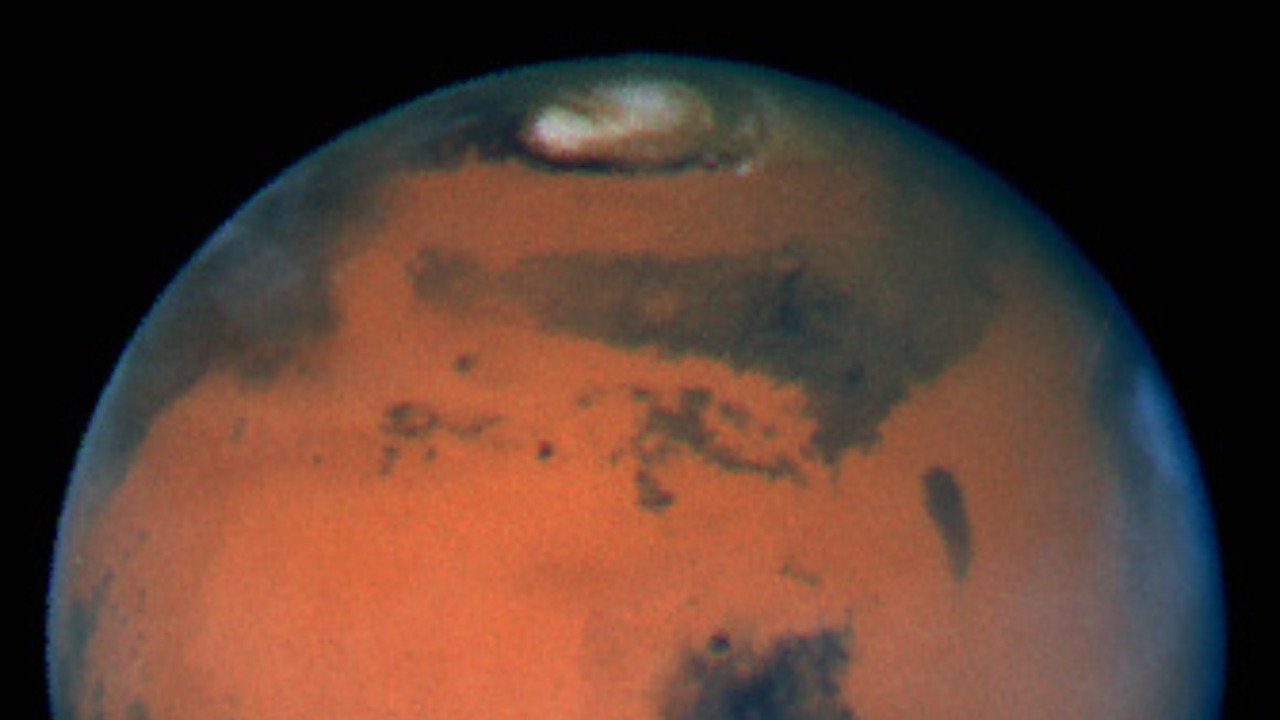
In a groundbreaking discovery, scientists have identified a massive ice deposit on Mars in a region previously thought to be devoid of water. This revelation, reported on October 23, 2025, challenges long-held assumptions about the Red Planet’s water reserves and has significant implications for future exploration and potential habitability. The find has left experts astonished, prompting a reevaluation of Mars’ geological history and its capacity to support life.
The Unexpected Location of the Ice Deposit
The ice was discovered in Mars’ equatorial region, an area characterized by its arid conditions and previously considered unlikely to harbor significant water reserves. This finding contradicts earlier models that suggested water was primarily confined to the polar caps. The discovery was made possible through radar imaging from orbiting spacecraft, which detected the ice beneath the surface. The volume of ice is estimated to be substantial enough to cover large areas if melted, suggesting a significant hidden water resource on the planet.
Initially, the scientific community was skeptical about the site’s ability to preserve ice over billions of years, given the harsh conditions of the Martian equator. However, the detection methods, as detailed in a source report, have provided compelling evidence of the ice’s existence. This discovery has sparked renewed interest in the region, as scientists seek to understand how such a large ice deposit could remain intact in an area previously deemed inhospitable to water.
Techniques Behind the Revelation
Ground-penetrating radar technology played a crucial role in uncovering the ice deposit. By probing the subsurface layers, scientists were able to determine the depth and purity of the ice. This technology, combined with data from NASA and international teams, allowed for a comprehensive analysis of the region. The timeline of observations leading to the October 23, 2025 announcement involved meticulous data collection and analysis, culminating in this significant discovery.
Verification processes were essential to confirm the ice’s existence. Scientists cross-referenced radar data with geological surveys to ensure the findings were accurate. This thorough approach helped dispel initial doubts and provided a clearer picture of the Martian subsurface. The collaborative efforts of various space agencies have been instrumental in advancing our understanding of Mars’ hidden water reserves.
Implications for Mars’ Past and Future
The discovery of ice in such an unexpected location suggests that Mars may have experienced ancient water flows or climatic shifts that were previously unknown. This could potentially rewrite timelines of planetary habitability, offering new insights into the planet’s history. Understanding these past conditions is crucial for scientists as they explore the possibility of life on Mars and the planet’s capacity to support future human missions.
For future exploration, the ice’s accessibility relative to the polar caps presents exciting prospects for resource utilization. Human missions to Mars could benefit from this newfound water source, which is more conveniently located than the distant polar regions. Experts have expressed astonishment at the scale of the find, with lead researchers highlighting its potential to transform our approach to Mars exploration. This discovery, as covered in contemporary analysis, underscores the importance of continued research and exploration of the Red Planet.
Challenges in Confirming and Accessing the Ice
Despite the promising discovery, several challenges remain in confirming and accessing the ice deposit. Mars’ environmental factors, such as dust storms and radiation, complicate further study of the bone-dry surface overlying the ice. These conditions pose significant obstacles for scientists aiming to gather more detailed data and samples from the site.
Planned rover or lander missions are in development to sample the site and gather direct evidence of the ice deposit. Building on the 2025 detection, these missions aim to provide more concrete data and insights into the ice’s composition and distribution. However, broader scientific debates continue regarding the ice’s origin, with theories ranging from subsurface aquifers to migrated deposits. The initial stunning reveal has sparked a renewed interest in Mars’ geological history and the potential for future discoveries.
More from MorningOverview